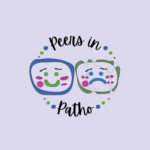Environmental Risk factors
Tobacco
 Multipotent carcinogenic mixture
Multipotent carcinogenic mixture 
 Linked to many cancers
Linked to many cancers
– Oropharynx, larynx, esophagus, lung, stomach, liver, pancreas, kidney
– Acute myeloid leukemia
– Cervix, bladder colorectal
 Second-hand smoke contains many toxic chemicals (7000)
Second-hand smoke contains many toxic chemicals (7000)
 Cigar and pipe smoking are equally harmful
Cigar and pipe smoking are equally harmful
Diet
 ~30% of the overall risk factors for cancer
~30% of the overall risk factors for cancer
 Mutagens found in human diet as a result of industrial/environmental contamination (pesticide/water)
Mutagens found in human diet as a result of industrial/environmental contamination (pesticide/water)
 Aflatoxins and liver cancer
Aflatoxins and liver cancer
– Aspergillus flavus; fungus infecting peanuts, tree nuts and grains. This can produce animal food-products that contain aflatoxins. Women can pass in aflatoxin to infants through breast milk
 Carcinogenic chemicals. In food
Carcinogenic chemicals. In food
 May influence epigenetics
May influence epigenetics
Obesity
 Based on BMI
Based on BMI 
 Related to increased incidence of several cancers
Related to increased incidence of several cancers
– Examples: esophagus, gastric, colorectal, liver, gallbladder, pancreatic, breast, uterine, cervical, ovarian and kidney
 Casual relationship to cancer is unclear
Casual relationship to cancer is unclear
 Gender differences in obesity-related cancers
Gender differences in obesity-related cancers
 Abdominal obesity can be associated with insulin resistance, hyperinsulinemeia and increased steroids, all of which increase risk for cancer development
Abdominal obesity can be associated with insulin resistance, hyperinsulinemeia and increased steroids, all of which increase risk for cancer development
Alcohol
 Risk factor for oral cavity, pharynx, hypopharynx, larynx, esophagus, and liver cancers
Risk factor for oral cavity, pharynx, hypopharynx, larynx, esophagus, and liver cancers
 Substantial alcohol consumption (e.g. 3 or more drinks per day) has been associated with high risk
Substantial alcohol consumption (e.g. 3 or more drinks per day) has been associated with high risk
 Cigarette/alcohol combinations increases a person’s risk for cancer
Cigarette/alcohol combinations increases a person’s risk for cancer
 Genetic factors involved
Genetic factors involved
Ionizing radiation
 X-rays, radioisotopes and other radioactive sources
X-rays, radioisotopes and other radioactive sources 
 Exposure causes cell death, mutations, chromosome aberrations (disorder)
Exposure causes cell death, mutations, chromosome aberrations (disorder)
 Mutations in germ cells are heritable
Mutations in germ cells are heritable
 Increased use of diagnostic testing is of concern
Increased use of diagnostic testing is of concern
– CT scans provide 50x more radiation to
stomach compaired to an x-ray.
UV radiation
 Principle source is sunlight (ultraviolet)
Principle source is sunlight (ultraviolet)
 Causes basal cell carcinoma, squamous cell carcinoma and melanoma (increased incidence)
Causes basal cell carcinoma, squamous cell carcinoma and melanoma (increased incidence)
 Produces ROS and other free radicals
Produces ROS and other free radicals
 Promotes skin inflammation
Promotes skin inflammation
 UVC rays do not enter the earth’s ozone (shortest wavelength = 100-290 nm)
UVC rays do not enter the earth’s ozone (shortest wavelength = 100-290 nm)
 UVB rays reach the skins surface – cause surface tanning, burns, signs of aging (medium wavelength = 290-320 nm)
UVB rays reach the skins surface – cause surface tanning, burns, signs of aging (medium wavelength = 290-320 nm)
 UVC rays penetrate deep into the skin’s layers and release free radicals and cause DNA changes that can result in skin cancers. Wavelength is the longest (320-400 nm)
UVC rays penetrate deep into the skin’s layers and release free radicals and cause DNA changes that can result in skin cancers. Wavelength is the longest (320-400 nm)
Electromagnetic radiation (EMR)
 Non-ionizing, low-frequency radiation
Non-ionizing, low-frequency radiation
 Microwaves, cell phones, and power frequency radiation associated with electricity and radio waves, fluorescent lights, computers and other electrical equipment
Microwaves, cell phones, and power frequency radiation associated with electricity and radio waves, fluorescent lights, computers and other electrical equipment
 USA recommended that low-frequency EMFs be classified as possible carcinogens
USA recommended that low-frequency EMFs be classified as possible carcinogens
Physical activity (30 mins a day)
 Reduces cancer risk (post-menopausal breast, colorectal, endometrial)
Reduces cancer risk (post-menopausal breast, colorectal, endometrial)
– Decreases insulin and insulin-0like growth factors
– Decreased obesity
– Decreased inflammatory mediators and free radicals
– Increased gut motility
o Less exposure of gut to dietary carcinogens
Sexual/reproductive behavior
 Carcinogenic types of human papillomavirus
Carcinogenic types of human papillomavirus
– 99.7% of women with cervical cancer
– HPV vaccination
Occupational hazards
 Upper respiratory passages, lung, bladder, peritoneum
Upper respiratory passages, lung, bladder, peritoneum
 Substantial number of occupational carcinogenic agents:
Substantial number of occupational carcinogenic agents:
– Asbestos (mesothelioma and lung cancer)
– Dyes, rubber, paint, explosives, rubber cement, heavy metals, air pollution
Air pollution
 Outdoor
Outdoor
– Heavy metal and aromatic hydrocarbon emissions from industry
 Indoor
Indoor
– Environmental tobacco smoke (ETS)
– Radon gas
– Heating and cooking combustion sources
– Asbestos
– Inorganic arsenic
Nutrition
 Foods that decrease cancer risk
Foods that decrease cancer risk
– Fruits/vegetables; fiber; foods containing vitamins A, B6, C, D, E and folate; whole grains; legumes/nuts
 Foods that increase cancer risk
Foods that increase cancer risk
– Fat (especially omega-6 fatty acids), high glycemic index carbs; high preservatives; alcohol; grilled/blackened foods; fried foods, high calcium (>2000mg)








































